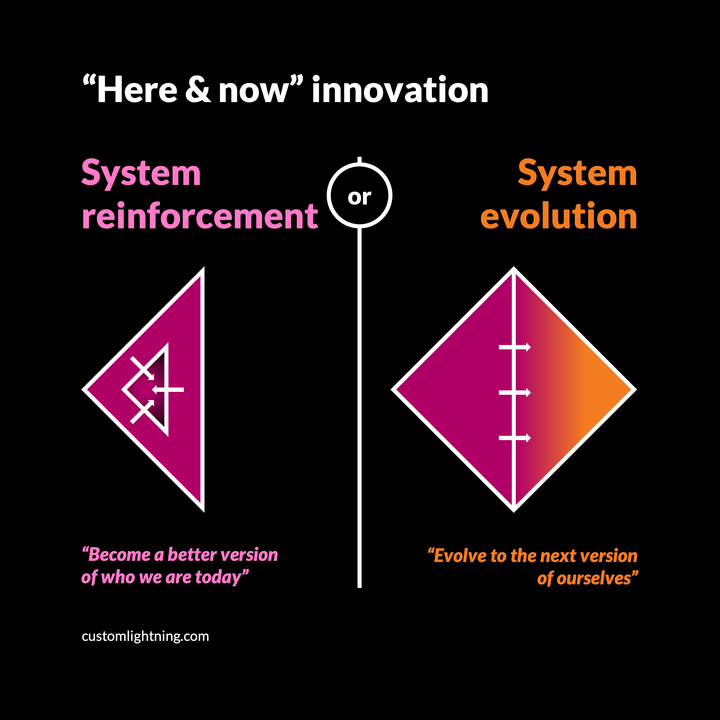[Blog] Overcoming misunderstandings, the bane of even experienced innovation leaders
Always, always assume by default that people misunderstand each other, even when you have goodwill and competence on your side.
![[Blog] Overcoming misunderstandings, the bane of even experienced innovation leaders](https://images.unsplash.com/photo-1495722281458-25edbdb08a1c?crop=entropy&cs=tinysrgb&fit=max&fm=jpg&ixid=MnwxMTc3M3wwfDF8c2VhcmNofDV8fG1pcnJvcnN8ZW58MHx8fHwxNjgxMjQ4NDc4&ixlib=rb-4.0.3&q=80&w=1200)
TL; DR
It’s your job to hunt down misunderstandings aggressively and to squash them with gusto.
Only teams that have worked together long enough and trustingly enough to “share the same headspace” can back off a bit from that paranoia.
Misunderstanding is the default state of all innovation teams
“… and so, ...” Professor Jonathan Levav, expert on behavior and decision making, reminded his graduate class one last time before the end of term:
“... never forget this: People are wrong. And they are darn sure about it!”
I sat in that room long ago. Professor Levav's warning has stayed with me over the years. Unfortunately, it keeps proving true.
Many scientists and writers attempt to teach us about the downsides of our individual and collective limitations and about methods to minimize such trouble. I personally love the work of David McRaney and Julia Galef.
But IMHO, one blindspot doesn’t seem to get nearly enough attention relative to the trouble it causes innovation teams: Misunderstanding.
Misunderstanding is especially bad in innovation
All innovation work eventually involves groups of people. And as soon as you work as a team, you get misunderstanding too.
Of course, misunderstanding can raise its ugly head in any group of two or more humans. But in other settings, we have a bunch of pre-defined history and convention to establish common mental frames, understanding, and norms. Not so in innovation.
For example, if you go to the baker and ask for bread, it’s obvious why the baker asks you for money. If you propose to your lover, it’s obvious that you are looking for a yes-or-no answer (well, a yes). And even in such simple situations, misunderstanding still happens.
But innovation is worse by an order of magnitude. Nothing exists outside our heads and the work already done. Everything is possible. There’s no time to describe it all. We inherently have to work together to get things done, doubly so in explicitly cross-functional work modes like product-led growth (PLG).
And so, misunderstanding is pre-programmed in innovation.
Assume and hunt down misunderstandings where you can (and know that there’ll still be some you fall prey to)
To be clear, it’s the job of every innovation team member to hunt for and reduce misunderstanding. (Eliminating it outright is a rosy-colored dream.)
You can even build some guardrails against it into team routines, e.g., by insisting that people always visualize word-heavy ideas, add real-life examples, and introduce ideas in writing, not by pitching them verbally.
But teams can slack on their diligence, just as they might on other good habits like eating veggies or going to the gym. Plus, there are the “unknown unknowns,” the misunderstandings for which the people on the team won’t even know to look out.
So it falls on the team’s leader in particular to act as a bloodhound who sniffs out misunderstandings relentlessly.
Might not be fun. Sometimes will get you incredulous looks from the team. But necessary nonetheless. Don’t ever, ever underestimate the corrosive power of misunderstanding!
Only teams with immense mutual understanding stemming from shared experience can breathe more easily
Luckily, there is relief. We aren’t doomed to live in echo chambers of our own minds, only hearing distortions of others' meaning.
Teams that truly understand each other, the ones that do it so well that they “share the same mind space,” those teams can at least back off the paranoia a bit.
But such empathy only comes with long experience that has catalyzed deep trust and eliminated personal walls and mutual confusion.
In The Culture Code, author Daniel Coyle shares a short anecdote of such understanding, as achieved by a U.S. elite military unit, the Navy’s SEAL Team Six:
When the SEALs ran a training exercises with another military unit, the other team’s commander kept issuing commands to his team. But the SEAL commander just watched in silence. Eventually, the other unit's leader couldn't handle the difference anymore. So he asked: Why wouldn't the SEAL commander talk with their troops? The answer:
“[B]ecause [I] don’t need to [talk]. I know my guys ….”
That’s what you aim for—running your entire "special forces mission" so successfully that you could do it in silence because you know (and trust) each other so much.
That’s when even misunderstanding surrenders. That's something worth working toward!
Further reading
Coyle, D. (2018). The Culture Code: The Secrets of Highly Successful Groups. Bantam. http://books.google.com/books?id=SwtFDwAAQBAJ&hl=&source=gbs_api
Galef, J. (2021). The Scout Mindset: Why Some People See Things Clearly and Others Don’t. Piatkus Books. http://books.google.com/books?id=oUJ1zQEACAAJ&hl=&source=gbs_api
McRaney, D. (2012). You Are Not So Smart: Why You Have Too Many Friends on Facebook, Why Your Memory Is Mostly Fiction, and 46 Other Ways You’re Deluding Yourself. Avery. http://books.google.com/books?id=Dj_ZCwAAQBAJ&hl=&source=gbs_api
Credits
Photo “abstract painting” by Erik Eastman on Unsplash




